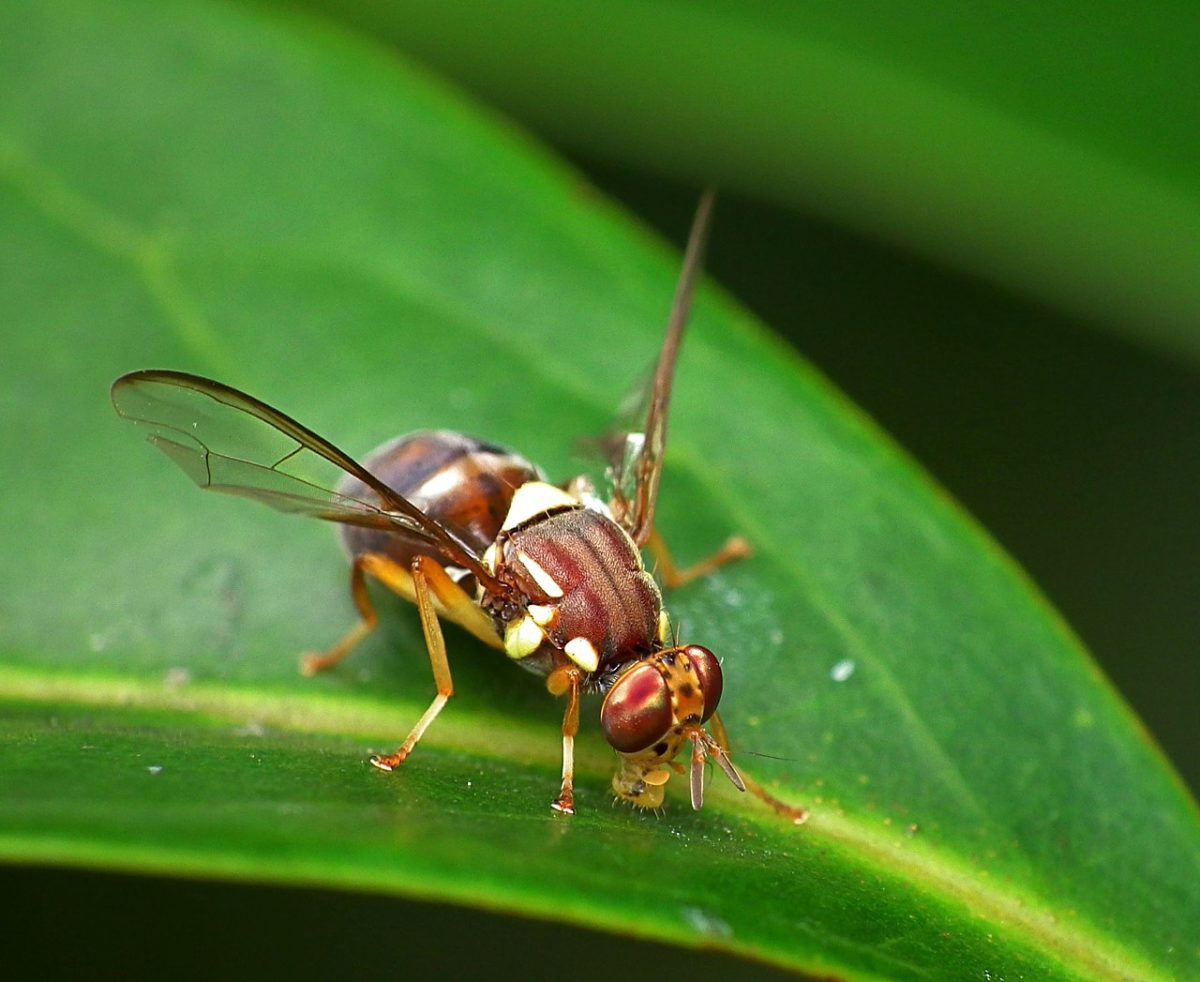Plant & Food Research scientists, as part of the Better Border Biosecurity (B3) research collaboration, and collaborators at the Institut Agronomique néo-Calédonien, have been collecting and analysing the odours of four ripe fruit hosts in a project aimed at developing a female attractant for Queensland fruit fly surveillance.
The work is the subject of a post on Plant & Food Research’s website.
Females of the Queensland fruit fly (QFF), Bactrocera tryoni, are among the most damaging pests of horticulture in the South Pacific. New Zealand is at high risk of incursions and deploys a national surveillance system for early detection, to enable a fast eradication response.
Current detection relies on a parapheromone lure for males of the species. But no long- lasting attractants for female QFF exist, which excludes the half of the population which causes the most damage.
In their research aimed at developing a female attractant for surveillance, the collaborating scientists from Plant & Food Research and the Institut Agronomique néo-Calédonien collected and analysed the odours of four ripe fruit hosts (known and potential) – orange, cherry guava, banana, and feijoa.
Using gas-chromatography coupled with electro-antennographic detection (EAD), the researchers detected 41 compounds that stimulated a response in the female fruit fly, seven of which were found to be common for more than one fruit.
Overall, mated females responded more often and with higher intensity than virgin females, as expected when mated females search for fruit to oviposit (lay eggs).
The 26 compounds that triggered the largest and most frequent responses in female QFF, were tested in an olfactometer – a device designed to analyse the behavioural response of live insects to an odour stimulus. In contrast to the EAD measurement, behavioural responses did not show strong differences between mated and virgin females, although they did differ significantly between the compounds.
No correlation was detected between the electrophysiological and behavioural responses.
Field testing with the behaviourally active compounds is being carried out in Australia, for the development of a lure for female Queensland fruit fly.
This work was performed with the support of a Pacific Fund from the Foreign Ministry of France. This project was funded by Horticulture Innovation Australia Limited with co-investment from The New Zealand Institute for Plant and Food Research Limited and support from the Better Border Biosecurity collaboration (b3nz.org.nz).
Journal Reference
Mas F, Manning L, Singlet M, Butler R, Mille C, Suckling DM 2020 Electrophysiological and Behavioural Responses of Queensland Fruit Fly Females to Fruit Odors J Chem Ecol 46 (2) https://doi.org/10.1007/s10886-019-01143-8
Source: Plant & Food Research












